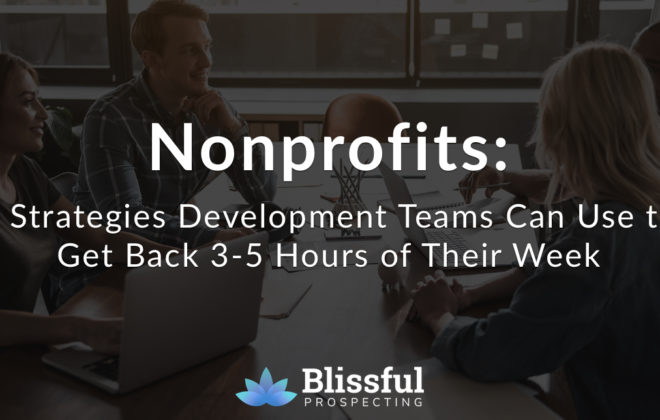
Nonprofit development is tough work.
"Too much to do and not enough time," is what we hear from a lot of development professionals.
You have aggressive fundraising goals. Securing budget for your department is a constant battle. And you could probably use an extra person or two to help with development.
If corporate partnerships are a part of your fundraising strategy, it's even tougher.
Corporate outreach takes serious time and resources to research companies, make sure their mission aligns with yours, find the decision-makers, get their contact information, figure out what to say, and follow up. Especially if you're approaching brands you don't have a personal connection with.
This article will be helpful if you can relate to any of the following:
Many of the tasks involved in corporate development are tedious and repetitive. The good thing is that there are many tools to help you with this.
Here are three strategies for saving time in your search for corporate partners:
The most labor-intensive part of corporate development usually happens at the front-end:
For gathering this information, I recommend using a tool called Apollo.io. They have a free plan you can use to research companies. And they also give you 1,000 contacts for free to start out. Then it's $40/mo.
Step #1: Start with building your requirements for a solid corporate partner.
Step #2: Then figure out who the decision-makers are. For nonprofits, they usually fit into these roles.
Step #3: Use Apollo.io to find and pull their email addresses and phone numbers.
This should save you 1-2 hours each week from having to manually hunt for companies, decision-makers, and their contact information.
If you've ever prospected for corporate partners, you know that it's labor-intensive. Especially if it's cold outreach and you don't have a personal connection with the decision-maker.
The good thing is that there are tools built specifically to manage this type of outreach.
Sales Engagement Platforms (SEPs)
Sending 50-100 emails to prospects each week takes forever if you have to manually send every email. Not to mention the follow-ups.
SEPs help you manage and automate the activities associated with cold outreach. You can use tools like MixMax (plans start at $29/mo) or YesWare (plans start at $35/mo) to set up email sequences, calls, and other prospecting tasks.
You do all of the work beforehand, then hit send and the tools will automate the follow-up.
A great SEP will easily cut down the time it takes for outreach by 25-50%. You could use that time to reach out to more prospects!
Calendar Scheduling Tools
Ever go back and forth with a prospect to schedule a time to chat? Calendly (free) is a great tool for scheduling meetings and saving back and forth emails.
Power Hours
We find it's very effective to create dedicated time blocks for prospecting. You can accomplish a lot in an undistracted one hour block.
If you don't make the time for reaching out to corporate partners, it's not going to happen. And if you do it periodically throughout the day, you're losing productivity by task switching.
Create recurring time blocks in your schedule for outreach. These tools should easily save you another 1-2 hours every week.
You might be using Salesforce or Raiser's Edge for your CRM. But you've probably noticed those tools are a little clunky to use.
And they don't really help you prep for calls and follow up with prospects.
Create a Call Prep Routine
If you create a process for call prep, it has multiple benefits. You have something repeatable that saves you time. And you have a process you can also delegate.
Make a bullet point list of everything you do to prep for corporate partnership calls. Be specific with exactly what information you're looking.
Create an outline you can use very every call. Include sections for specific information you want to know prior to the call, questions to ask during the call, and action steps you finish the call with.
Create Templates for Follow Up
If you're using MixMax or Yesware (mentioned above), you can create email templates and send them out. Create a template that does 80% of the work for you when writing emails, then personalize the rest. This will save you a ton of time in writing emails from scratch every time.
Building these processes and routines should save you another hour or so every week.
What are your favorite strategies, tools, or tactics for keeping your development team productive? Let me know in the comments.
More Resources: